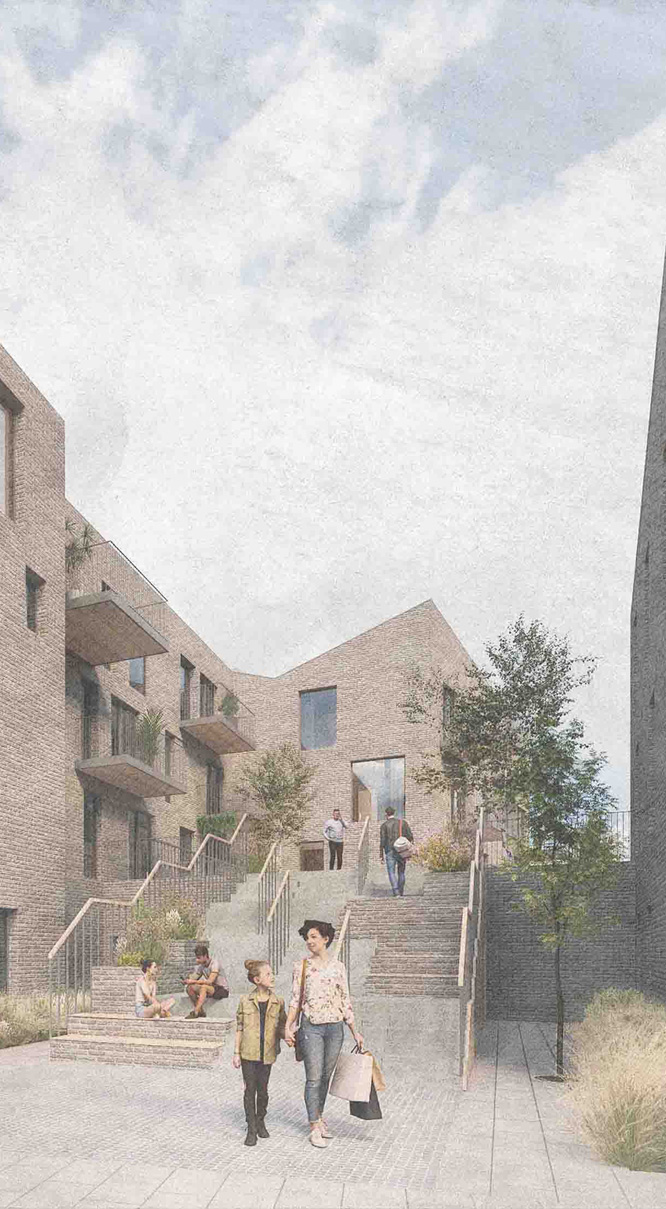PASSIVE HOUSE: THE BENEFITS FOR COMMERCIAL BUILDINGS
Contrary to the name suggests, Passive House standard is not just for Houses. Passive House standards are suitable for, and have many benefits, for commercial buildings.
A recent study by Exeter City Living found that with a 3% increase in build cost, huge savings in energy can be made across the lifetime of the building, crucially, with an increase in occupant comfort. Their research showed that an existing Leisure Centre in Exeter had running costs of a whopping £500k/year, whereas a larger new build Passive House Leisure Centre had running costs of only £75k/year.
Passive House principles have most value in high energy use buildings: hotels, swimming pools / leisure centres, residential care & nursing homes, apartments, etc., but is suitable for most building types. Essentially, any building requiring good temperature control, with a warm & constant heat i.e. thermal comfort, will benefit from Passive House principles. Which is most habitable buildings (houses, hotels, care homes, offices, leisure centres, schools etc).
As in Passive House standard homes; the benefits in commercial buildings are similar –
- Lower energy costs i.e. lower energy bills, due to a ‘fabric first approach’ whilst utilizing solar gains.
- No draughts, therefore lower energy costs and better thermal comfort, due to the airtightness (0.6 m3/h per m2).
- Better air quality, due to the airtightness and MVHR (Mechanical Ventilation with Heat Recovery system); which is beneficial for the health and longevity of the building, but also for the occupants. Potentially, less sick days, better air quality for residents / those with respiratory issues.
- Good quality of light, means that occupants enjoy working and living in the building (premium rent / maximum occupancy / occupants want to be in the building).
- Less overheating. Passive House calculations ensure overheating is reduced to acceptable standards; which means occupants are thermally comfortable.
- No performance gap. The calculated, predicted energy use is very close to the actual energy use of the building.
- Standard of workmanship is excellent. The onus for Passive House certification is on the contractor to ensure documentation of build quality; therefore it is imperative for the contractor to ensure correct build and detailing, which ensures check mechanisms are in place for build quality
Exeter City Living have built various Passive House buildings:
“Back in 2008, I was looking to provide housing solutions in response to fuel poverty that was a very real issue for some within our city. Passivhaus buildings seemed the logical way to go – energy efficient, value for money over the longer terms and comfort for occupants. 12 years later, the success of this approach is apparent, with one of our residents regularly attesting to the fact she has never turned her heat on since she moved in”. Emma Osmundsen, Managing Director, Exeter City Living
VALUE FOR BUILDING OWNERS / Build to let
- Higher occupancy rates: if your building is rented, occupants are thermally comfortable, and energy bills are low, occupancy rates should be high. This can apply to offices / apartments / or any rental space.
- For owner/occupiers: low energy use means your initial outlay to build Passive standard will have a quick payback time.
- Particularly important in buildings where the occupants do not pay for the energy / heat, eg hotels and care homes; where the heating is included in the price of the stay is the thermal comfort. Often, away from home, people will increase the temperature, as a luxury comfort. With Passive House buildings this is unlikely to impactful on the energy bills.
Value for developers who build to sell
- There is a great marketing opportunity to those interested in buying; whether that is apartment owners, development houses, or offices. The Passive House building they will purchase will be thermally comfortable, have great air quality, and with the low energy demands, the premium spent on the building will quickly pay for itself.
- With so few developers building Passive House standard, raising the thermal comfort levels, and reducing energy costs for purchasers, there may be a premium on the sales price.

